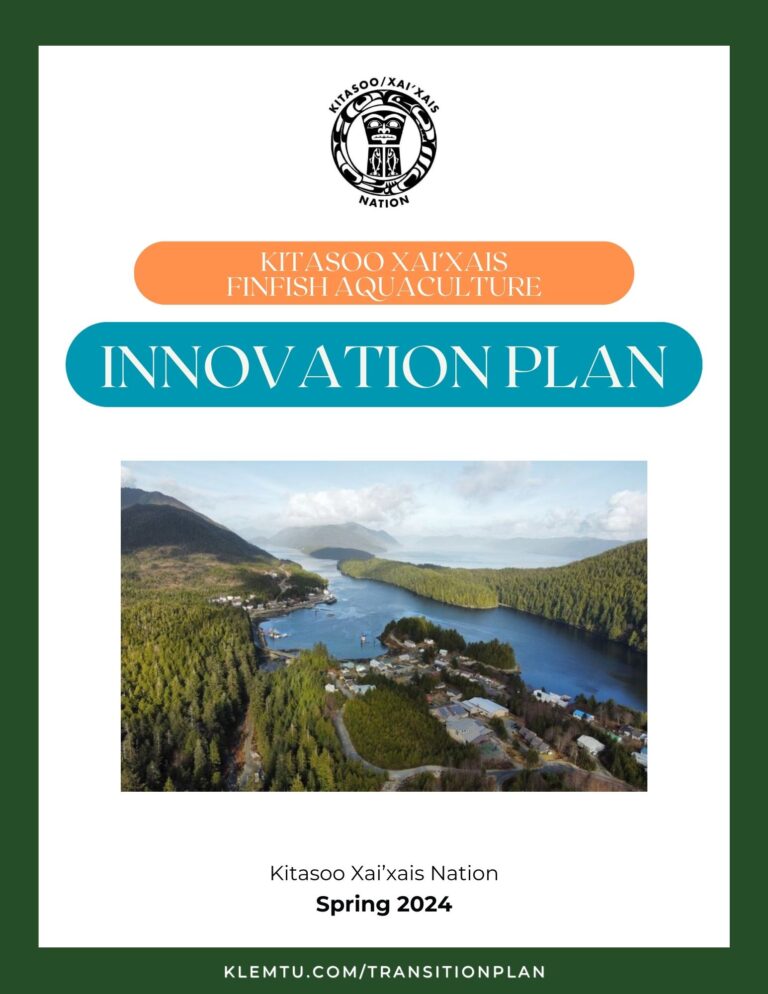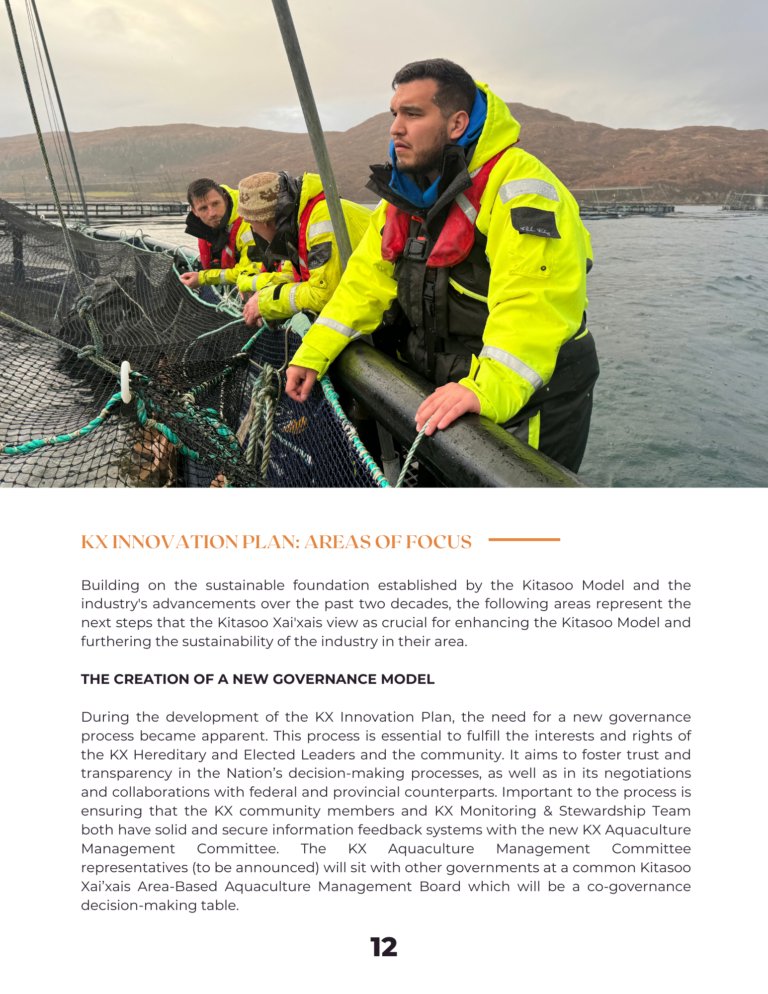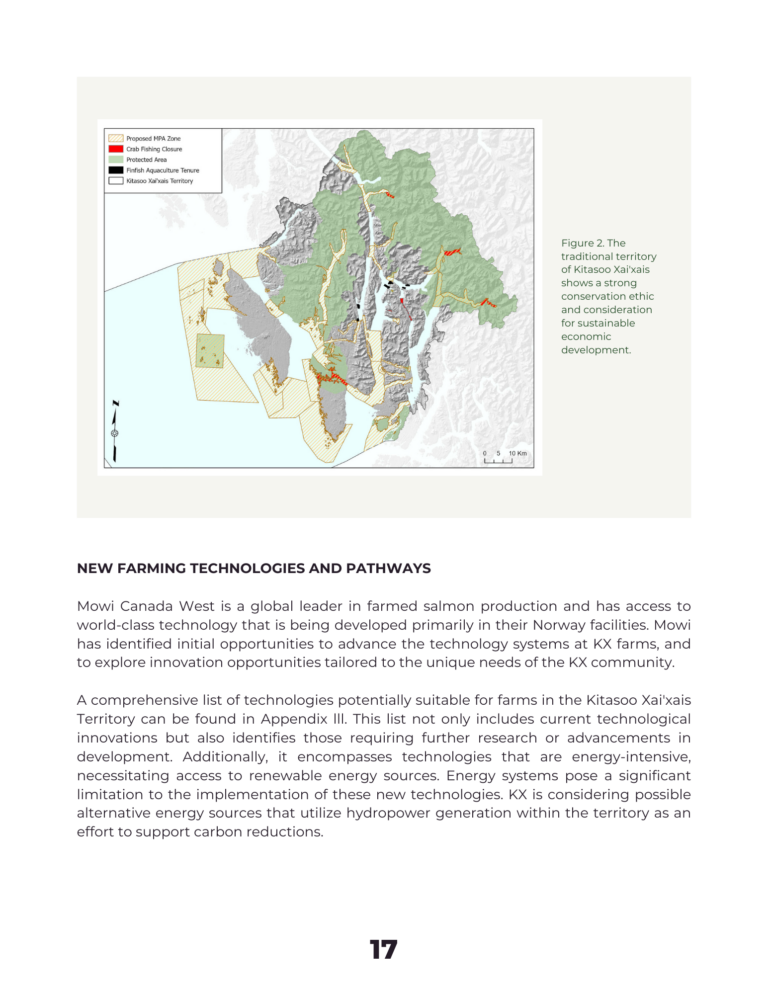Home • Economic Development • Kitasoo Seafoods • Kitasoo Xai’xais Finfish Transition Plan
Kitasoo Xai’xais Finfish Transition Plan
Introducing the Kitasoo Xai'xais Innovation Plan
We, the Kitasoo Xai’xais (KX) Nation, are pleased to share the KX Innovation Plan, a sustainable development model for our local finfish aquaculture sector. This plan, developed using over 20 years of scientific research and centuries of traditional knowledge, represents our commitment to sustainability and community well-being. It not only addresses political and public concerns regarding the salmon farming industry, but also sets a foundation for a sustainable and prosperous future in finfish aquaculture, reinforcing our commitment to environmental stewardship and community resilience.
The overarching vision of the Kitasoo Xai’xais Nation is centered on empowering our members and fostering self-reliance and self-determination within the community. This means bringing them in on the decision making process and engaging them in high level discussions. Whether that’s about new technologies, action management, or stewardship and science teams, we strive to collectively move towards the KX Salmon Centre of Excellence by amplifying our local voices. This is key to the KX Approach, and is integral to our continued success and independence as a First Nations community.
In November 2022, Isaiah Robinson, KDC General Manager, travelled to Norway to explore aquaculture technology & innovation methods to better inform community decision-making around local salmon farming.
Why We Created the KX Innovation Plan
It’s no secret that the aquaculture industry has raised concerns across Canada. However, these concerns are based on outdated scientific data, misinformation, and a lack of trusted public communication. The salmon farming industry is a key contributor to the economic stability and overall well-being for the Kitasoo Xai’xais community. With salmon aquaculture in the KX Nation, we have a 99% employment rate with 51% of those being tied up in aquaculture. As a remote coastal nation, we know that if these year-round jobs disappear, they will not be replaced.
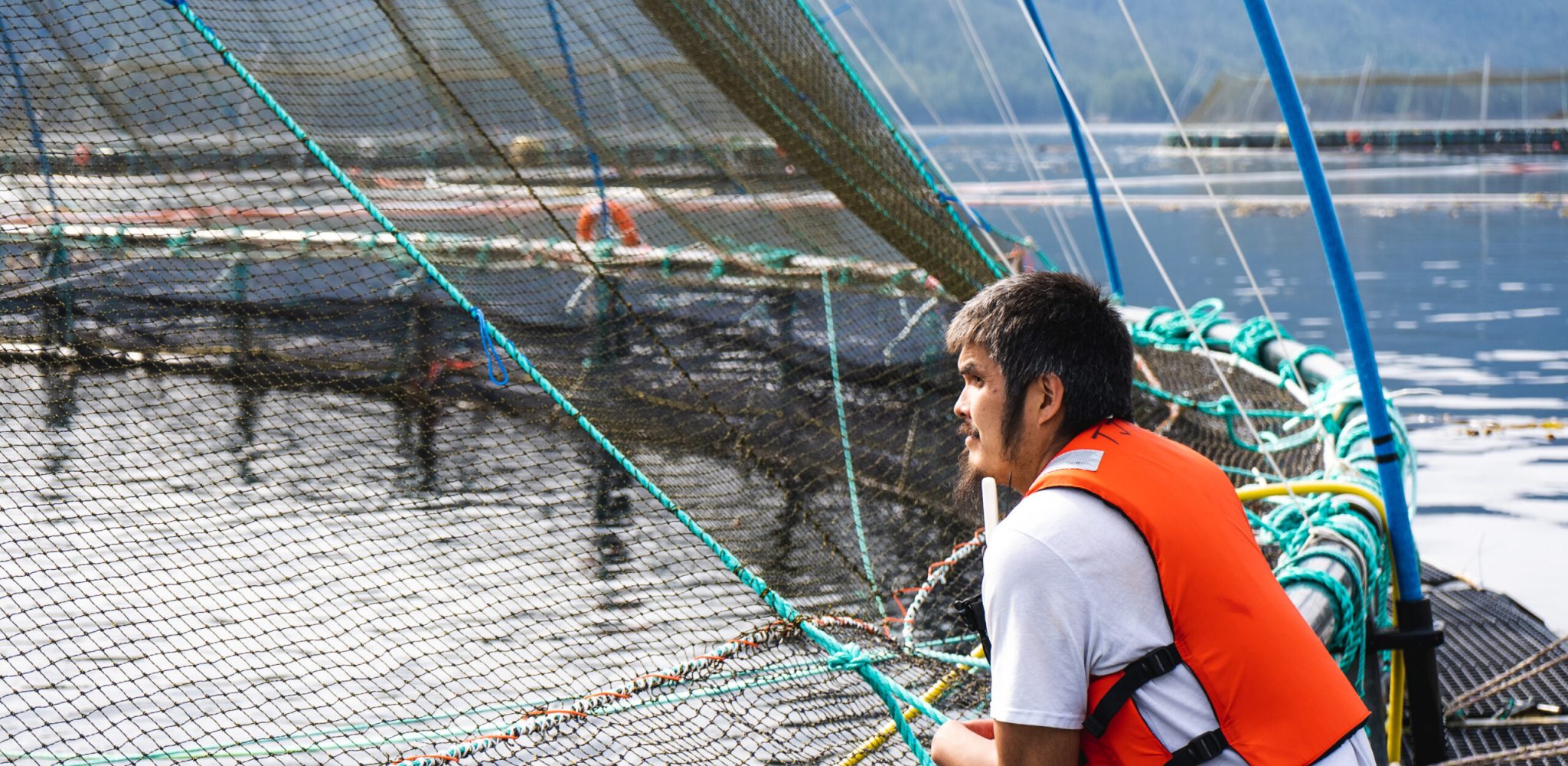
A local Kitasoo Xai’xais fish farm employee stands on one of Kitasoo Seafoods’ salmon farms.
Misinformation amongst activists, compounded by political interference, has been contributing to public confusion and mistrust regarding the industry. During the 2019 elections, Justin Trudeau announced his plan to phase out open net-pen salmon farms in B.C. This, combined with the pre-existing political and public landscape surrounding salmon farming, prompted the Department of Fisheries and Oceans (DFO) to reconsider the current operational norms.
In 2022, the DFO released a new policy outlining a goal to transition the industry away from open-net pen fish farms in an effort to reduce interactions between wild and farmed salmon. While our nation is open to enhancing sustainability, we do not support a complete land-based transition because it would force the industry to relocate away from our territories and move to more urbanized centers with accessible power infrastructure.
We, the Kitasoo Xai’xais, have continued to assert our Rights and Title in our traditional territories. We have invited DFO to engage in collaborative efforts and to gain insights into our forward-thinking approach to industry management. We have invited political leaders and neighbouring nations to tour our farms and see firsthand what our innovative approach has created. Our continued efforts to break through the noise, make scientific and sustainable advancements, and balance ocean management with economic prosperity are detailed in the KX Innovation Plan.


Isaiah Robinson spoke on a panel at the Indigenous Resource Opportunities Conference to represent the Kitasoo Xai’xais community and defend our right to self-determination.
Key Elements of the Innovation Plan
To realize our overarching goals, the primary objectives for the Kitasoo Xai’xais Innovation Plan are:
- To enhance the adoption of technology and innovation in the local industry through active Kitasoo Xai’xais involvement,
- To establish the KX Aquaculture Management Committee as an oversight authority for environmental monitoring and management, and
- To develop and implement a plan for metrics and indicators that reflect the goals of the Nation and address the concerns of the general public.
The objectives above are elaborated throughout the KX Innovation Plan and have been vetted through community engagement with KX community members.
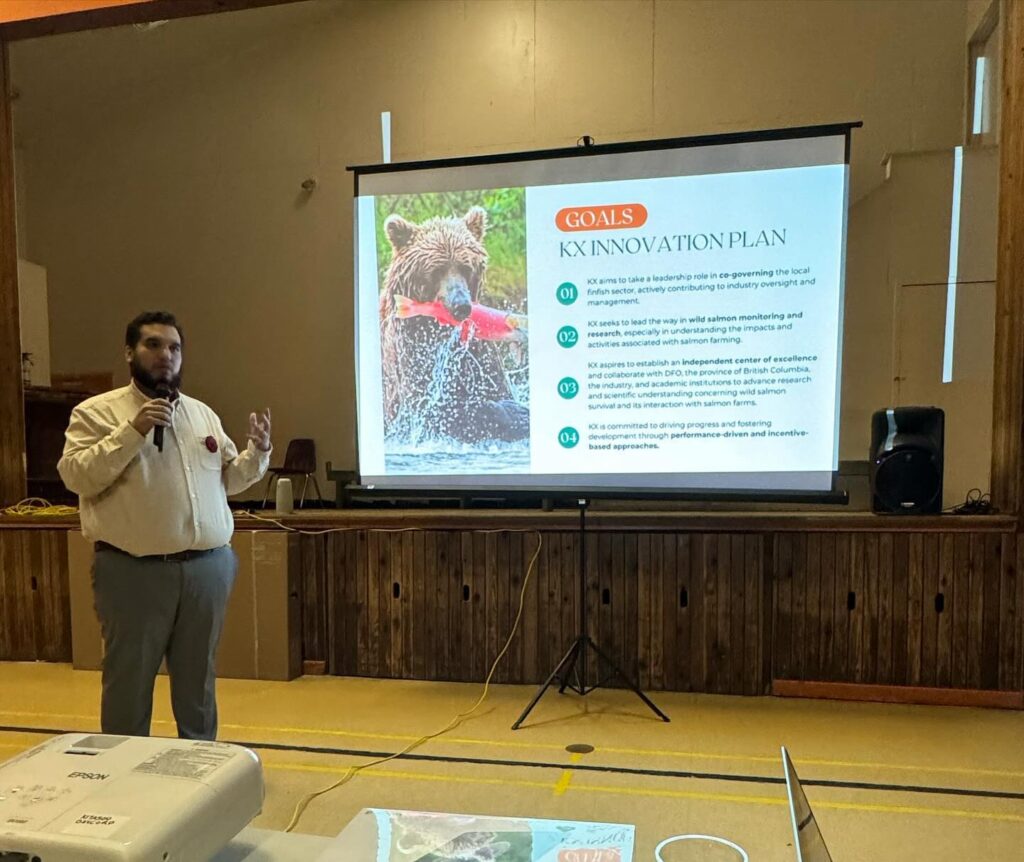
Isaiah robinson presenting the KX innovation plan goals at a Kitasoo xai’xais community meeting.
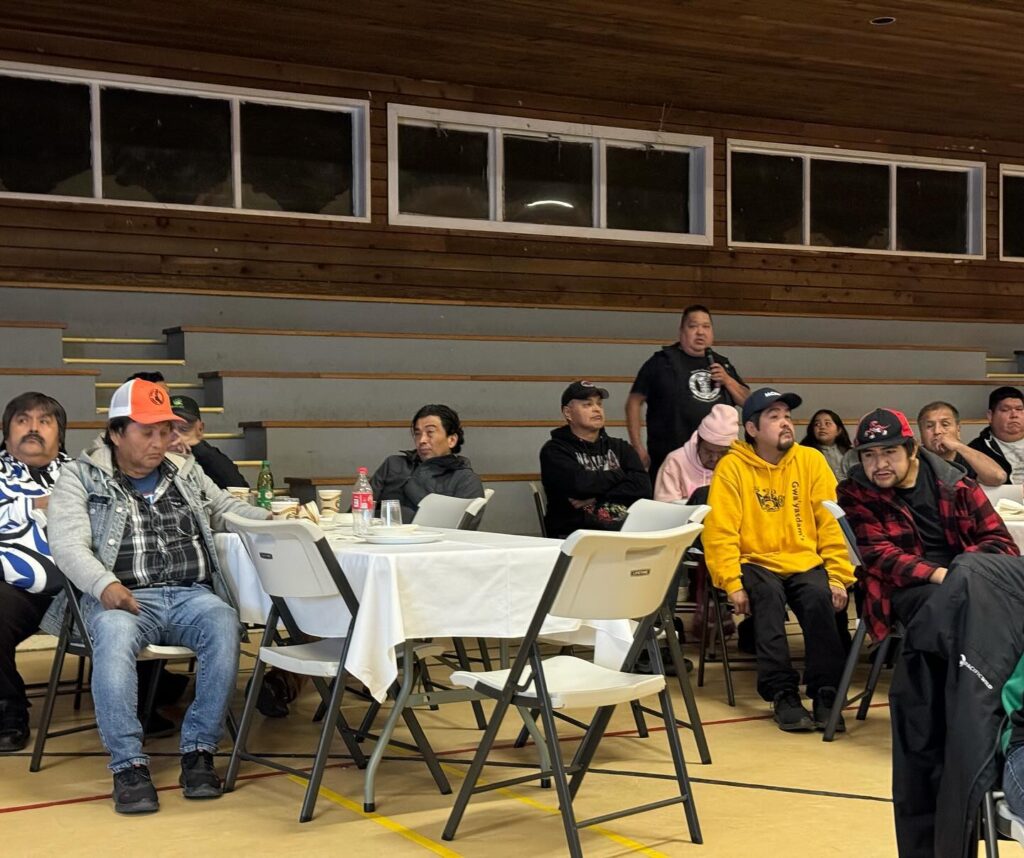
Kitasoo Xai’xais community members providing feedback on the KX Innovation Plan.
Final Words
Salmon farming and environmental protection are not mutually exclusive, but they can coexist. Implementation of new innovation programs are expected to start in 2025. Initial stages will begin with feasibility research of new technologies, as well as recruiting our industry partner, Mowi Canada West, to support technical knowledge and capacity building at KX’s local salmon hatchery. By sharing this Innovation Plan, we invite you to join us in supporting a future where economic development and environmental stewardship thrive together.
Finfish Aquaculture Science Videos
Finfish scientists presented and engaged with Kitasoo Xai’xais leadership and community members at the KX Community Finfish Science Workshop in Klemtu. This workshop was an important step in our Nation’s meaningful engagement efforts to ensure the success of community-driven finfish aquaculture initiatives.
A Brief Summary of Salmon Farming in KX Territory
Salmon farming in KX Territory began in the 1990s. As a result of community consultation, Kitasoo Xai’xais chose to pursue a partnership with Nutreco in 1999. The original agreement that was made with Nutreco started what is now commonly known in industry and education as the Kitasoo Xai’xais Model.
The Kitasoo Xai’xais Model is our Nation’s own management approach to the salmon farming industry that we’ve been practicing for decades. The KX Model has been the highest standard across BC for years. As other Nations learn about it, they have adapted it to the interests of their own communities.
Although the Kitasoo Model has become a renowned framework, it is also an evolving representation of Kitasoo Xai’xais standards, and the community’s input is crucial to making it better.
What is sustainable finfish aquaculture?
Sustainability is usually evaluated by factors related to environmental, economic, and social expectations.
Our expectations and social interests in aquaculture may change over time making sustainable aquaculture a dynamic concept. Science, research, innovation, and technology also change over time and help to increase our understanding of aquaculture, wild salmon interactions, and the general ecosystem.
As a community, we can identify monitoring priorities and implement our own monitoring protocol as a way to raise the sustainable standards in our local industry. As we learn more over time, we can decide for ourselves whether it meets our ongoing community interests and priorities in regards to environment, economic and social needs.
